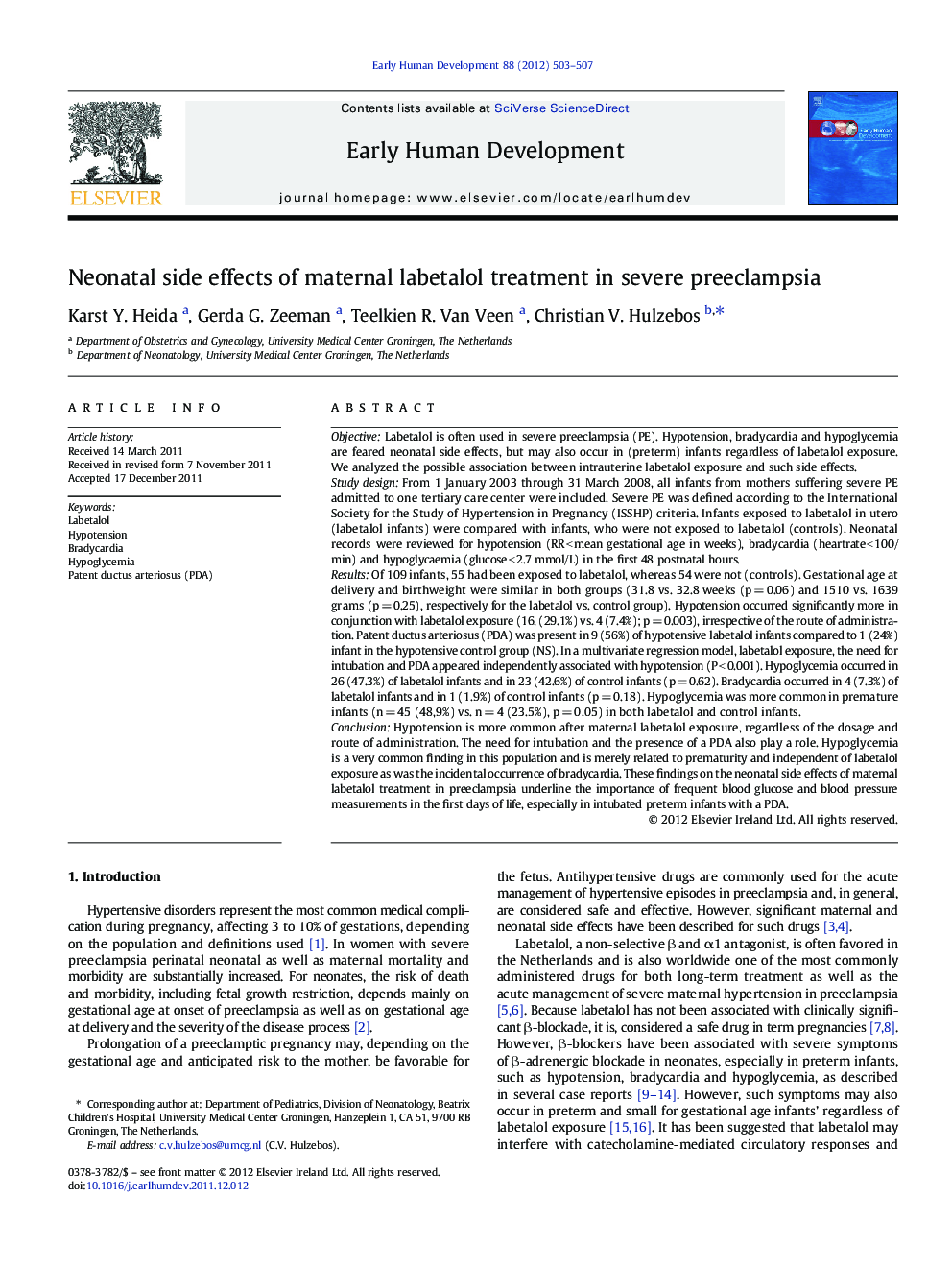| Article ID | Journal | Published Year | Pages | File Type |
|---|---|---|---|---|
| 6172116 | Early Human Development | 2012 | 5 Pages |
ObjectiveLabetalol is often used in severe preeclampsia (PE). Hypotension, bradycardia and hypoglycemia are feared neonatal side effects, but may also occur in (preterm) infants regardless of labetalol exposure. We analyzed the possible association between intrauterine labetalol exposure and such side effects.Study designFrom 1 January 2003 through 31 March 2008, all infants from mothers suffering severe PE admitted to one tertiary care center were included. Severe PE was defined according to the International Society for the Study of Hypertension in Pregnancy (ISSHP) criteria. Infants exposed to labetalol in utero (labetalol infants) were compared with infants, who were not exposed to labetalol (controls). Neonatal records were reviewed for hypotension (RR < mean gestational age in weeks), bradycardia (heartrate < 100/min) and hypoglycaemia (glucose < 2.7 mmol/L) in the first 48 postnatal hours.ResultsOf 109 infants, 55 had been exposed to labetalol, whereas 54 were not (controls). Gestational age at delivery and birthweight were similar in both groups (31.8 vs. 32.8 weeks (p = 0.06) and 1510 vs. 1639 grams (p = 0.25), respectively for the labetalol vs. control group). Hypotension occurred significantly more in conjunction with labetalol exposure (16, (29.1%) vs. 4 (7.4%); p = 0.003), irrespective of the route of administration. Patent ductus arteriosus (PDA) was present in 9 (56%) of hypotensive labetalol infants compared to 1 (24%) infant in the hypotensive control group (NS). In a multivariate regression model, labetalol exposure, the need for intubation and PDA appeared independently associated with hypotension (P < 0.001). Hypoglycemia occurred in 26 (47.3%) of labetalol infants and in 23 (42.6%) of control infants (p = 0.62). Bradycardia occurred in 4 (7.3%) of labetalol infants and in 1 (1.9%) of control infants (p = 0.18). Hypoglycemia was more common in premature infants (n = 45 (48,9%) vs. n = 4 (23.5%), p = 0.05) in both labetalol and control infants.ConclusionHypotension is more common after maternal labetalol exposure, regardless of the dosage and route of administration. The need for intubation and the presence of a PDA also play a role. Hypoglycemia is a very common finding in this population and is merely related to prematurity and independent of labetalol exposure as was the incidental occurrence of bradycardia. These findings on the neonatal side effects of maternal labetalol treatment in preeclampsia underline the importance of frequent blood glucose and blood pressure measurements in the first days of life, especially in intubated preterm infants with a PDA.
